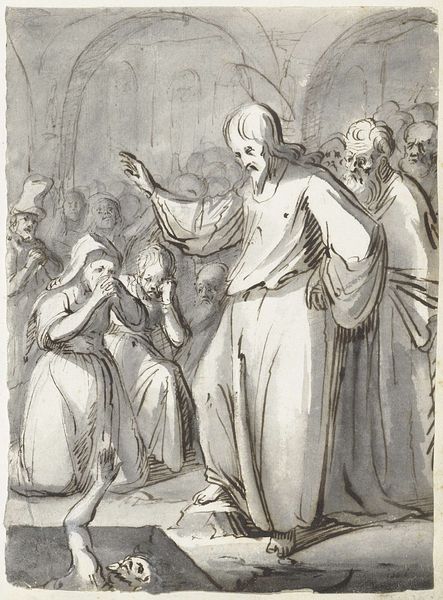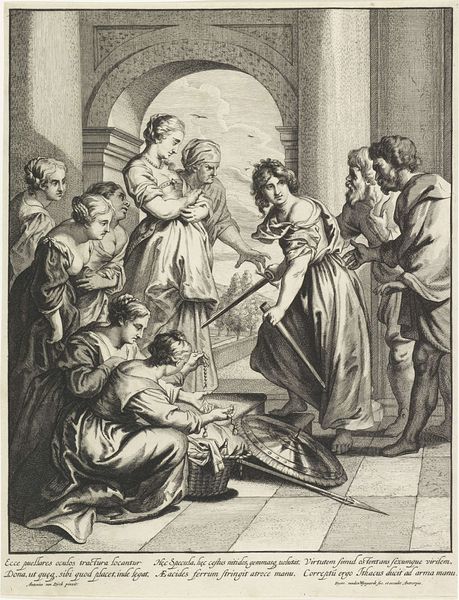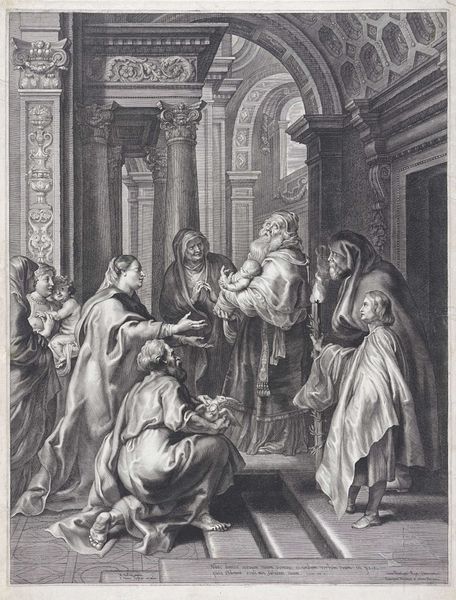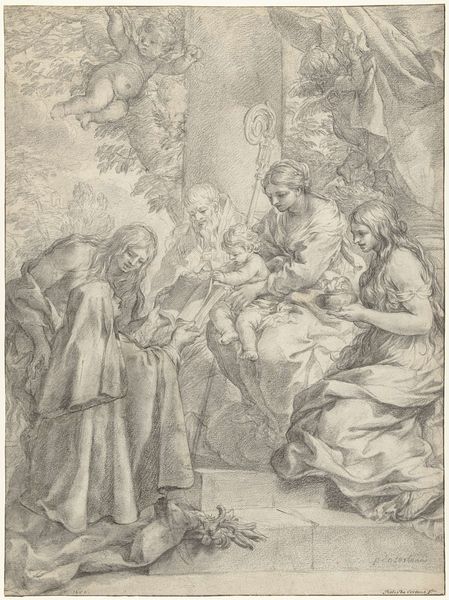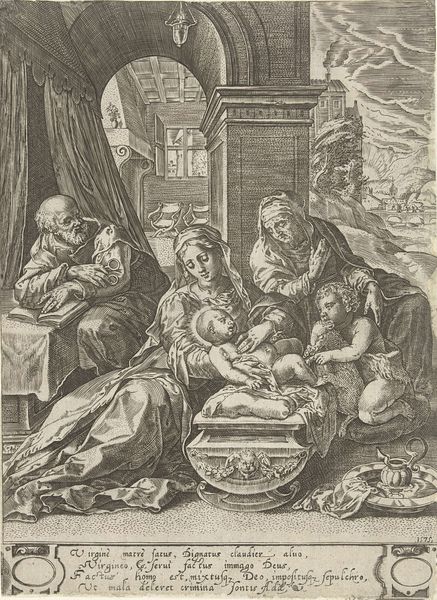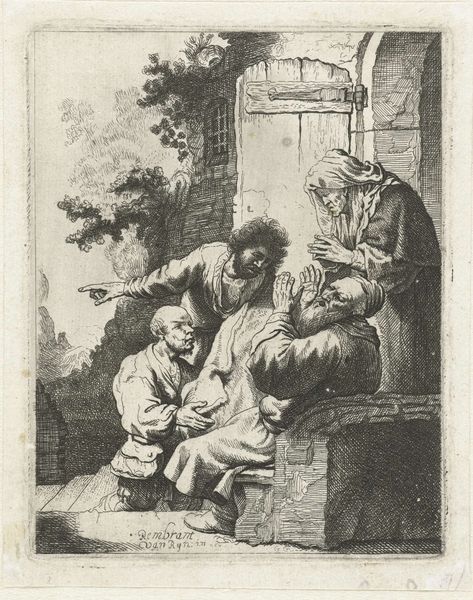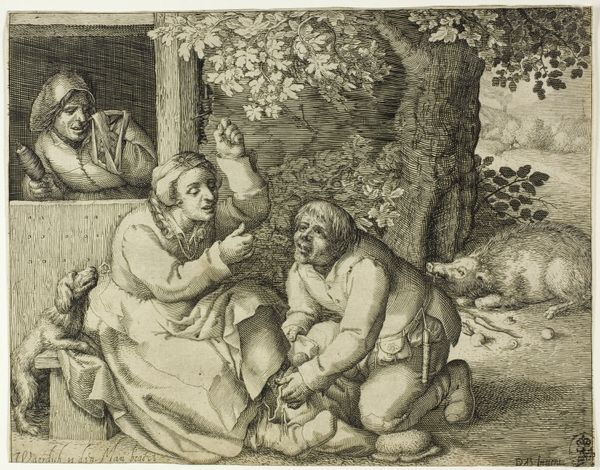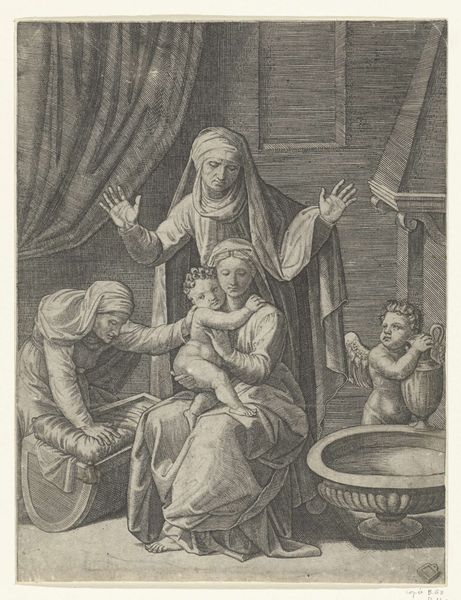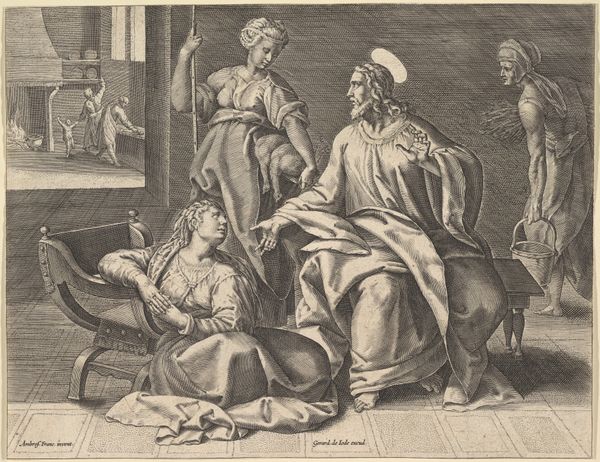
drawing, paper, ink, pen
#
portrait
#
drawing
#
narrative-art
#
baroque
#
charcoal drawing
#
figuration
#
paper
#
ink
#
pencil drawing
#
group-portraits
#
surrealism
#
pen
#
portrait drawing
#
pencil work
#
realism
Dimensions: height 180 mm, width 143 mm
Copyright: Rijks Museum: Open Domain
Curator: Immediately striking is the muted palette; the ink and charcoal seem to create a solemn and thoughtful atmosphere. Editor: Indeed. What we're looking at is Moses ter Borch's "Presentation in the Temple," created in 1662. It is currently held at the Rijksmuseum. Consider the broader implications of the Baroque era for family structure; this is about societal roles, gender dynamics within a specific religious context, and the power dynamics inherent in representations of sacred narratives. Curator: Agreed, there's clearly an interesting subject on display. Still, I can't ignore the sheer confidence in the drawing itself; look at the artist's economy of line, which evokes texture without being fussy. Note, in particular, how light falls to create an understated visual rhythm. Editor: But shouldn't we also consider the symbolic importance? The presentation, this event depicted in the temple, places the child—Christ, in this case—within a lineage of tradition and prophecy. It also signals Mary's purification. This echoes of complex religious doctrine. How does the use of specific details within the setting subtly suggest the intersectional, gendered meanings? Curator: Perhaps. However, Ter Borch's realism tempers didactic interpretation. Note the naturalism; look at the folds of the fabrics, the fall of light upon skin. The formal qualities of these elements feel quite down-to-earth, making a scene that transcends the dogma. Editor: Do you think it offers viewers a space for questioning their place in their community? To acknowledge women as subjects and the impact the scene has in shaping cultural norms? It highlights an otherwise invisible history, especially given Ter Borch's cultural context at the time. Curator: Fair point. Ultimately, I suppose both elements inform each other here. Ter Borch manages a captivating dialogue between content and style. Editor: Exactly, together they help in deconstructing historical meaning and present our own understanding about identity.
Comments
No comments
Be the first to comment and join the conversation on the ultimate creative platform.
